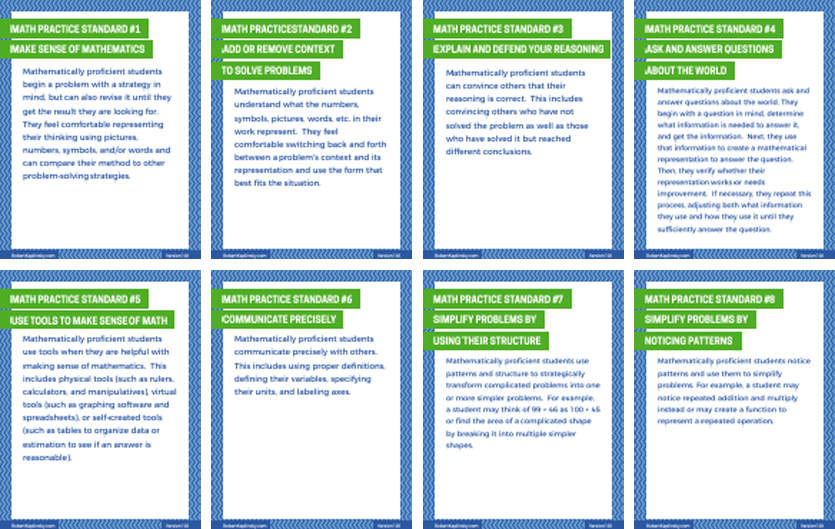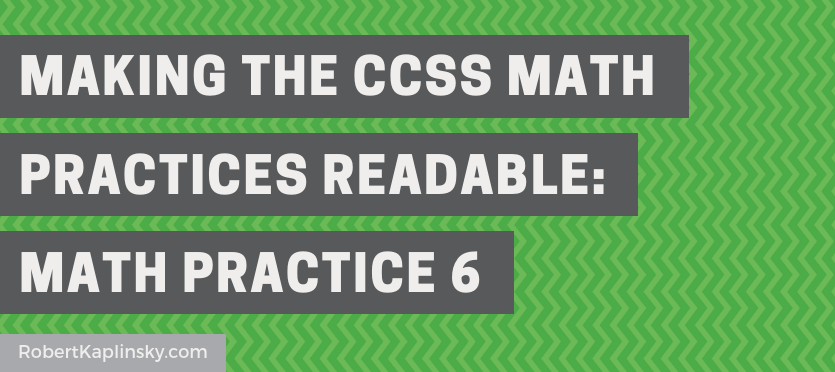This is the sixth of an eight blog post series where I’ll attempt to make a version of each of the Common Core State Standards’ Math Practices that educators, parents, and students can all understand. Simply put, the Math Practices are really tough to make sense of, which means that few educators have read them in full paragraph form and even fewer confidently understand them.
- My guiding principle comes from Antoine de Saint Exupéry who said “perfection is attained not when there is nothing more to add, but when there is nothing more to remove.” Certainly I could always add more details, but my goal is to make each standard as succinct as realistically possible and stop.
- I will make significant changes while still preserving what I believe to be each standard’s essence.
- I’ll also copy and paste the official math practice for comparison.
- I’ll add notes to explain my reasoning.
I realize that inevitably my version will also be flawed. Mainly I’m just curious to see if I can do any better. Thanks in advance for leaving me constructive criticism in the comments below so I can improve them.

Math Practice 6: Communicate precisely.
Mathematically proficient students communicate precisely with others. This includes using proper definitions, defining their variables, specifying their units, and labeling axes.
Math Practice 6: Attend to Precision.
Mathematically proficient students try to communicate precisely to others. They try to use clear definitions in discussion with others and in their own reasoning. They state the meaning of the symbols they choose, including using the equal sign consistently and appropriately. They are careful about specifying units of measure, and labeling axes to clarify the correspondence with quantities in a problem. They calculate accurately and efficiently, express numerical answers with a degree of precision appropriate for the problem context. In the elementary grades, students give carefully formulated explanations to each other. By the time they reach high school they have learned to examine claims and make explicit use of definitions.
- I changed the title to “Communicate precisely” because the phrasing “attend to precision” is not particularly common in the United States and people often think this standard is more about calculating than communicating.
- I am not concerned about removing the phrase “they calculate accurately and efficiently” because that is certainly a part of other math practice standards such as Math Practice 1.
- I removed the words “try to” in the first sentence because that felt unnecessary.


I like the simplicity of your description. Consider adding something about precision of value. Knowing if an estimate is good enough, what way to round and what digit to round to is also part of this standard. Thank you for your work on making these more accessible to our teachers and students!
Valid point, Marcie. I think that some of what you included could fit into other standards like MP1. So I believe that is why I opted to not include it. It’s super subjective though, so feel free to emphasize that as well.
Bravo! The beauty of a precisely written mathematical practice on the topic of communicating precisely was not lost on me. I’ve so enjoyed reading your versions of all the mathematical practices–thank you!–but this one might be my favorite 🙂
Thank you, Jaclyn. I hadn’t considered the irony until you mentioned it.